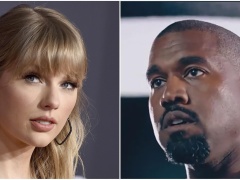
Warner Music Group Corp. weathered a “tough quarter” in first financial quarter of 2023, as described by new CEO Robert Kyncl, who took the helm of the company on Jan. 1, the day after the quarter ended.
In the period ended Dec. 31, 2022, total revenue decreased 8% or 3% in constant currency, with digital revenue decreasing 5% or 1% in constant currency. Net income was $124 million versus $188 million in the prior-year quarter, while OIBDA increased 9% to $349 million versus $320 million in the prior-year quarter or 16% in constant currency. Adjusted OIBDA decreased 6% to $335 million versus $355 million in the prior-year quarter or was flat in constant currency and cash provided by operating activities increased 62% to $209 million versus $129 million in the prior-year quarter. Top-selling artists for the quarter included Red Hot Chili Peppers, Zach Bryan, Lizzo and Ed Sheeran.
Kyncl did not candy-coat the results on Thursday’s earnings call and did not note that they closed before he’d even taken office — or that they are partially due to an accounting adjustment that subtracted a week from the quarter — instead saying he is “committed to clear and straightforward communication on our progress.” He described the results and then briefly explained how he intends to remedy them, pointing to a strong release schedule for later in the year — including releases from Ed Sheeran and Cardi B, among others — and two key new hires, both from his former home at YouTube, EVP of strategy and operations Tim Matusch and president of technology Ariel Bardin, who “will be critical to facilitating our strategic vision and ensuring its operational execution” and “will drive the development of the systems, infrastructure, and products needed to support our growth,” respectively. “We plan to thoughtfully reallocate some resources to accelerate how we use technology and data to empower artists and songwriters, as well as drive greater efficiency in our business,” he said.
Kyncl noted that as a former top streaming service executive, he has the “unique benefit of having been on both sides of the table” but admitted that he is “still calibrating this side,” and acknowledged that he was not providing many specifics at this early stage, but said he believes “actions speak louder than words” and spoke broadly of financial discipline, cost containment and the company’s plans to position itself for the looming battle on AI. “We are already exploring exciting new ideas and initiatives… although many of the fundamentals will remain the same,” he said.
“As successful as music has become, there’s still meaningful upside ahead for three reasons,” he continued.“One, as technology opens up emerging economies, the industry’s addressable market will continue to expand even further.Two, innovation is constantly creating new use cases for music, giving us the opportunity to diversify our revenue sources.Three, music is still undervalued, especially when compared to other forms of entertainment, like video.”He pointed to the fact that unlike video, many music streaming services have not raised subscription prices since they were introduced, and that “it’s encouraging that we’re seeing first steps in the right direction by Apple, Deezer, and Amazon,” meaning a monthly subscription increase, and spoke of a similar “collaborative” approach with streaming services, as was marked by his years at YouTube.
He also thanked and praised his predecessor, Steve Cooper, who led Warner to solid results over the previous 11 years.
Regarding the results, CFO Eric Levin, however, pointed to the accounting adjustment that subtracted a full week from the fiscal calendar and a lighter release schedule than the previous year’s quarter, and noted that the company saw a 9% growth in music publishing revenue, 13.2% in music publishing streaming revenue and 11% increase in operating income.
“Our results reflect our resilience and operational discipline in the face of macroeconomic headwinds, as well as the impact of the extra week in the prior-year quarter,” he said. “Our continued focus on efficiency enabled us to deliver strong operating and free cash flow growth, even while certain revenue lines came under pressure. We are enthusiastic about our release schedule for the second half of the fiscal year, which will feature amazing music from some of our biggest artists.”
The report notes that revenue was down7.8%(or2.7%in constant currency), unfavorably impacted by foreign currency exchange rates and the prior-year quarter’s additional week,which was primarily reflected in recorded music streaming revenue. Digital revenue decreased5.0%(or0.9%in constant currency) and streaming revenue decreased4.0%(or was flat in constant currency).
Growth in music publishing streaming revenue of13.2%(or16.8%in constant currency) was offset by a decline in recorded musicstreamingrevenue of6.7%(or2.6%in constant currency) as a result of a lighter release schedule and the impact of the additional week in the prior-year quarter and exchange rates, as well as a market-related slowdown in ad-supported revenue. Digital revenue represented64.0%of total revenue in the quarter, compared to62.1%in the prior-year quarter. Revenue decreases in the quarter were also driven by a decline in recorded music physical and artist services and expanded-rights revenue and music publishing synchronization revenue, partially offset by growth in recorded music licensing revenue and music publishing performance revenue. Music publishing mechanical revenue remained flat on an as-reported basis, but increased in constant currency. Excluding the impact of the additional week, total revenue was down3.4%(or up2.0%in constant currency).
Operating income was $265 million compared to $239 million in the prior-year quarter. OIBDA was $349 million, compared to $320 million in the prior-year quarter, an increase of 9.1% (or 16.3% in constant currency), and OIBDA margin increased 3.7 percentage points to 23.5% from 19.8% in the prior-year quarter (or increased 3.9 percentage points to 23.5% from 19.6% in constant currency).The increases in operating income, OIBDA and OIBDA margin were primarily due to the net gain on sale of the company’s interest in certain sound recording rights.
Net income was$124 millioncompared to$188 millionin the prior-year quarter. Adjusted net income was$110 millioncompared to$223 millionin the prior-year quarter.As ofDecember31, 2022, the company reported a cash balance of$720 million, total debt of$3.946 billionand net debt (defined as total debt, net of deferred financing costs, premiums and discounts, minus cash and equivalents) of$3.226 billion.
Recorded music revenue was down10.6%(or5.6%in constant currency) driven by a decline in digital, physical and artist services and expanded-rights revenue. Digital revenue was down7.7%(or3.6%in constant currency). Streaming revenue was down6.7%(or2.6%in constant currency). Adjusted for the impact of the additional week, recorded music streaming revenue was up0.5%(or4.8%in constant currency). Streaming revenue reflects a lighter release schedule and a market-related slowdown in ad-supported revenue. Digital revenue represented 64.8% of total recorded music revenue versus 62.8%in the prior-year quarter. Physical revenue was down31.8%(or26.5%in constant currency) primarily due to a lighter release schedule.
Artist services and expanded-rights revenue decreased11.2%(or4.2%in constant currency) primarily due to lower direct-to-consumer merchandising revenue at EMP and lower advertising revenue. Licensing revenue increased9.0%(or16.9%in constant currency), due to an increase in broadcast fees, synchronization and other third-party licensing, partially offset by the impact of exchange rates. Recorded music operating income was $283 million, up from $276 million in the prior-year quarter and operating margin was up 2.9 percentage points to 22.8% versus 19.9% in the prior-year quarter.
Music publishing revenue increased9.2%(or14.2%in constant currency). The increase was driven by growth in digital and performance revenue. Digital revenue increased12.0%(or15.5%in constant currency) and streaming revenue increased13.2%(or16.8%in constant currency), reflecting the continued growth in streamingand timing of new digital deals. Digital revenue represented59.6% of total music publishing revenue versus 58.1%in the prior-year quarter.Performance revenue increaseddue to continued growth from bars, restaurants, concerts and live events. Mechanical revenue remained flat on an as-reported basis, but increased in constant currency. Synchronization revenue was lower on both an as-reported basis and in constant currency, primarily due to lower commercial licensing activity in the U.S.and the timing of legal settlements. Music publishing operating income was $49 million compared to $32 million in the prior-year quarter and operating margin increased 5.6 percentage points to 19.6%.






